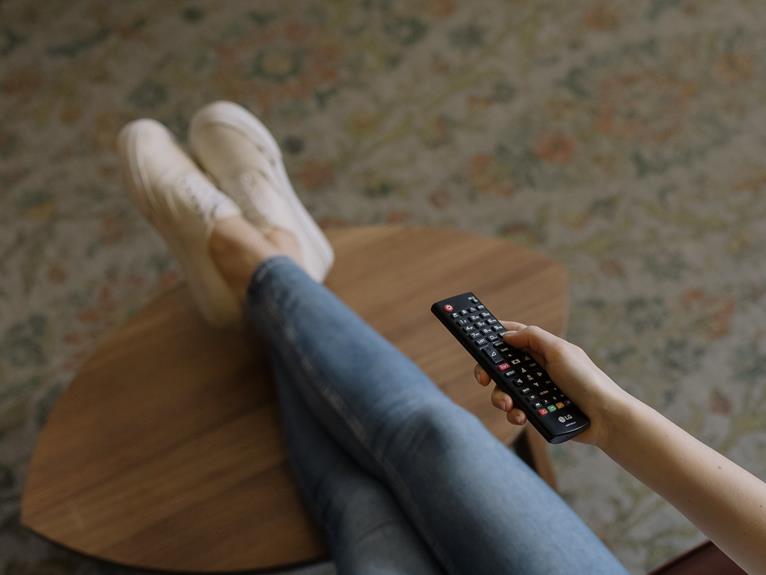Whether a console table should match a coffee table depends on the desired room aesthetic and personal taste. Matching tables can create a unified and orderly look, while mixing styles can add contrast and interest.
Considerations include material, color, and the room's overall style. The goal is to find a balance that works for both function and design preference.
Exploring Design Harmony
Design harmony is important when choosing console and coffee tables for a living room. It's essential for creating a visually appealing and functional space. The goal is to make the furniture pieces work together, balancing visual weight so no item dominates.
Achieving a harmonious living room involves mixing materials, shapes, and sizes. For example, pairing a minimalist console table with a sturdier coffee table can maintain visual balance. Pieces should relate through design elements like shape, material, or color.
Color and finish are also important for design harmony. Tables with complementary colors or finishes help unify the furniture and decor. While wood tones and metal finishes don't need to match exactly, they should look intentional.
The scale is crucial as well. Table size and height must fit the room and other furniture to create a proportional, welcoming space. Attention to these details helps create a harmonious living room.
Considerations for Matching
When choosing to match a console table with a coffee table, consider the room's design. Matching tables can create unity, while contrasting materials add interest. Ensure the tables are proportional to the room and each other for visual balance.
Complementary colors or finishes can unify the space without exact matches. A unique console or simple coffee table can add personality. Ultimately, the decision should align with the room's style and function.
Careful selection can enhance the space's appeal and reflect personal taste.
Advantages of Coordination
Coordinating your console and coffee tables can enhance the aesthetic appeal of your living space by creating visual harmony. Matching furniture pieces provide unity and purpose to your design, which is especially beneficial in open-plan spaces where furniture defines different areas. Similar design elements, colors, or materials in both tables can serve as focal points that unify the room's decor.
Additionally, a coordinated set simplifies decorating. It sets a consistent style, making it easier to choose complementary rugs, lamps, and decor items. Matching tables contribute to balance and symmetry, adding to the room's organized appearance.
Thoughtful coordination of these pieces can make a living room more attractive. While console and coffee tables do not need to be identical, they should share a design characteristic that ties the room together. The right combination of these tables can turn a space with separate items into a cohesive and welcoming environment.
Embracing Contrasting Styles
In interior design, mixing contrasting styles can add interest and individuality to a room. For example, placing a modern console table behind a soft sofa can contrast with a rustic coffee table, creating a diverse and intriguing space.
Using contrasting styles allows for creativity, such as combining a simple console with an elaborate vintage coffee table. This juxtaposition can give the impression of a space that has evolved over time.
Decorative items are key in blending different styles. Choosing the right rug, cushions, or artwork can connect varying elements into a unified look while maintaining the appeal of contrast. Experimenting with different textures, colors, and shapes can help integrate styles from various periods and design approaches.
Balancing the size and scale of furniture is important. Larger tables can be the focus, with smaller tables adding to the decor without overwhelming the space. This approach keeps the room balanced and clutter-free while allowing each item to stand out. As a result, the space reflects both diversity and harmony, showcasing character and style.
Tips for a Cohesive Look
For a cohesive look in the living room, choose a console table that matches the design of the coffee table. Placing the console table behind the sofa adds functionality and style. Make sure both tables have similar shapes and lines, whether modern or traditional, to ensure they coordinate well.
Use matching materials and finishes to unify the tables. A glass-top coffee table could go with a console that has glass details. Similar wood or metal finishes will link the tables without them being exactly the same, keeping the design interesting without clashing.
Keep to a consistent color scheme with the tables to maintain continuity. The tables should also be proportional to each other and the room. Avoid pairing a small coffee table with a very large console, as this can disrupt the balance of the space.
Making a Personal Statement
A console table that shows your style can improve your living room's look, even if it's different from your coffee table. You can choose to match or contrast the two tables to express your personality.
The console table, often placed against a wall or behind a couch, is good for showing off your interests, like art, souvenirs, or vases, and adds interest to your space.
The coffee table is functional but can also reflect your personality. Choosing items that you like, instead of just matching sets, gives the room more character. You can tie the tables together through contrasting textures, colors, or themes.
When setting up your living room, it's important to consider the size and placement of the console and coffee table in relation to other furniture and the space available. Decorating these tables with unique items and lighting can make them look better and fit well with the rest of the room.





